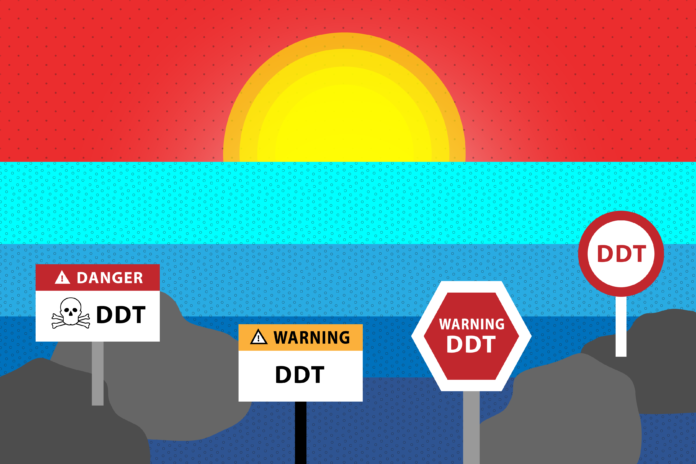Approximately 25,000 barrels of toxic chemicals were found off the coast of LA after sitting for decades
Cancerous sea lions. What might sound like a Cards Against Humanity card has actually turned out to be the key to a major, albeit terrifying, discovery. Last month, it was finally confirmed that thousands of barrels filled with Dichlorodiphenyltrichloroethane (DDT)—and likely other chemicals—have been corroding off the Los Angeles Coast for decades. DDT is one of the most famous chemicals in the world, immortalized by Rachel Carson’s “Silent Spring,” which is often credited with kickstarting the modern environmental movement in the U.S.
“It is not my contention that chemical insecticides must never be used. I do contend that we have put poisonous and biologically potent chemicals indiscriminately into the hands of persons largely or wholly ignorant of their potentials for harm,” Carson said about DDT in her book. “We have subjected enormous numbers of people to contact with these poisons, without their consent and often without their knowledge.”
DDT was first used during World War II to fight typhus. Eventually, it made its way to the U.S. mainland, where it was used for decades as a pesticide until it was banned in 1972. This ban came nearly a decade after “Silent Spring” in response to the public outrage about its possible carcinogenic qualities. The chemical also had been linked to the decline of a plethora of wildlife, most notably the bald eagle. Although it is still used today in some countries to control mosquito-borne malaria, the chemical has been outright banned in dozens of countries.
Over the past few years, unusually high rates of cancer have been found in California sea lion populations. One recent study even found that 1 in 5 California sea lions have some form of cancer, likely caused by the accumulation of chemicals like DDT in the ocean.
“What the study showed is that animals with higher levels of contaminants develop cancer,” said Dr. Frances Gullard, the lead author of the study, in an article with The Independent. “The genetic markers we looked at were not significant in predisposing animals to cancer. It seems that early life exposure to contaminants makes them susceptible to the herpes-causing cancer, as distinct from being carrier animals.”
It is believed that many animals come into contact with DDT in the food chain during breeding season off the coast of Southern California. Infected animals usually are euthanized before they can succumb to the cancer. This indicates a larger problem within the ecosystem, suggesting that DDT and chemical infiltration could be contributing to the massive loss of oceanic biodiversity observed over the past century.
So what does this mean for humans? DDT doesn’t dissolve in water, meaning it’s still safe to swim and surf around the site. But that doesn’t necessarily mean that there are no health impacts. Humans are part of the food chain and eat some of the organisms that sea lions feed on, making it possible for humans to also ingest DDT.
“There’s a broader problem of thinking of the ocean as this unlimited garbage dump that’s going to take up our carbon dioxide, take up our mercury, deal with the plastic that we don’t throw away properly, be a dumping ground for pesticides, deal with whatever is in runoff—and that our health is going to be separable from that,” said Amro Handoun, a professor at the Scripps Institution of Oceanography, to the LA Times last year. “But what we’re learning more and more is that our health and the ocean’s health are pretty inseparable.”
DDT has been banned for decades and is a proven carcinogen, yet we haven’t been able to eliminate it from our food supply and are still feeling its impacts today. This is for a variety of reasons, but most importantly, the failure of the federal government to hold corporations accountable for their actions. Unfortunately, I expect this to become fairly commonplace in the next few decades as we begin to see the long-term effects of many of the pollutants that the Environmental Protection Agency has banned in the second half of the previous century.
Cleanup of sites like these are often lengthy and expensive and comes after decades of litigation between the government and corporations with unlimited resources and money to spend. Simply banning a chemical after it has been used for decades is not enough. Until these companies are effectively held accountable for their actions and forced to be liable for the damage they have caused to human health and the environment, wildlife and human life will continue to pay the price.
Written by: Joe Sweeney — jmsweeney@ucdavis.edu
Disclaimer: The views and opinions expressed by individual columnists belong to the columnists alone and do not necessarily indicate the views and opinions held by The California Aggie.




